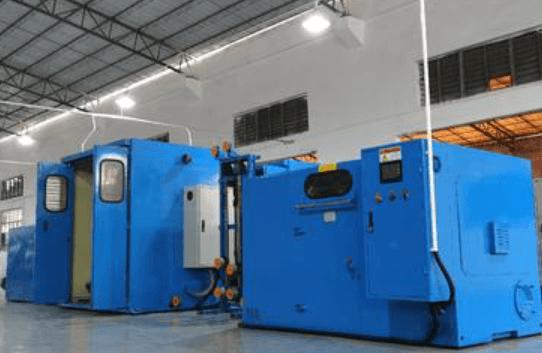
Why Would You Use an HDMI Splitter?
In the digital era, HDMI (High-Definition Multimedia Interface) technology has become increasingly prevalent in our everyday lives. From televisions and gaming consoles to computers and projectors, HDMI is a standard method of connecting devices to transmit high-quality audio and video signals.
One device that has gained popularity alongside HDMI technology is the HDMI splitter. In this article, we will explore what HDMI splitters are, how they work, their effectiveness, and the pros and cons of using them.
One device that has gained popularity alongside HDMI technology is the HDMI splitter. In this article, we will explore what HDMI splitters are, how they work, their effectiveness, and the pros and cons of using them.
What is an HDMI Splitter?
An HDMI splitter is a device that allows you to connect multiple HDMI-enabled devices to a single HDMI output, effectively splitting the signal from one source into multiple outputs. This means that you can connect a single source, such as a DVD player or gaming console, to multiple displays or devices simultaneously, without the need for constantly switching cables.
How Does an HDMI Splitter Work?
An HDMI splitter works by receiving the HDMI signal from the source device and then duplicating and amplifying it to multiple outputs. When you connect the source device to the input port of the HDMI splitter and connect the output ports to different displays or devices, the splitter distributes the same audio and video signal to all connected devices, allowing you to enjoy the content simultaneously on multiple screens.
Why Would You Use an HDMI Splitter?
There are several situations where using an HDMI splitter can be beneficial. Firstly, in a home entertainment setup, you can connect a single HDMI source, such as a Blu-ray player, to multiple TVs in different rooms, enabling everyone to enjoy the same content simultaneously.
Secondly, in business or educational settings, HDMI splitters can be used to display presentations or lectures on multiple screens or projectors, ensuring that everyone in the room can view the content clearly.
Additionally, HDMI splitters are useful for gaming enthusiasts who want to play games on multiple monitors, providing a more immersive gaming experience.
Secondly, in business or educational settings, HDMI splitters can be used to display presentations or lectures on multiple screens or projectors, ensuring that everyone in the room can view the content clearly.
Additionally, HDMI splitters are useful for gaming enthusiasts who want to play games on multiple monitors, providing a more immersive gaming experience.
Are HDMI Splitters Effective?
HDMI splitters are generally effective in distributing high-quality audio and video signals across multiple devices. They support various HDMI versions, including HDMI 1.4 and HDMI 2.0, and can transmit resolutions up to 4K Ultra HD and beyond.
However, it's important to choose a high-quality HDMI splitter that supports the desired resolution and has sufficient signal amplification capabilities to ensure optimal performance.
However, it's important to choose a high-quality HDMI splitter that supports the desired resolution and has sufficient signal amplification capabilities to ensure optimal performance.
Pros of HDMI Splitters
In this section, the author would give a further introduction to the HDMI splitters by listing the pros of HDMI splitters.
● Simultaneous Display
HDMI splitters enable you to display content on multiple screens or devices simultaneously, making them ideal for various applications, including home theaters, gaming setups, and presentations.
●Easy Installation
DMI splitters are typically plug-and-play devices, requiring minimal setup. You only need to connect the source device and the desired number of displays to the splitter, eliminating the need for complex wiring.
●Cost-Effective Solution
Instead of purchasing multiple sources for each display, an HDMI splitter allows you to connect multiple displays to a single source, saving both money and space.
Cons of HDMI Splitters
HDMI splitters also have some drawbacks. Then, in this section, the author would list some cons of HDMI splitters.
●Signal Degradation
Depending on the quality of the HDMI splitter and cable used, there may be a slight signal degradation when splitting the HDMI signal, leading to a marginal loss in picture or sound quality.
●Limited Distance
HDMI splitters have a limited transmission distance. If the displays are far apart, signal loss may occur, requiring the use of signal boosters or HDMI extenders.
●Lack of Independent Control
HDMI splitters distribute the same content to all connected devices, so individual control of each display is not possible. This limitation may be a drawback in scenarios where independent control over each display is required.
Conclusion
HDMI splitters offer a convenient solution for distributing audio and video signals from a single source to multiple displays or devices. They are effective in providing simultaneous display functionality, making them suitable for various applications such as home theaters, gaming setups, and presentations.
They offer simultaneous display functionality, easy installation, and cost-effectiveness. However, signal degradation, limited transmission distance, and the lack of independent control are important factors to consider when using HDMI splitters. By understanding the pros and cons of HDMI splitters, you can make an informed decision about whether they are the right solution for your specific needs.
They offer simultaneous display functionality, easy installation, and cost-effectiveness. However, signal degradation, limited transmission distance, and the lack of independent control are important factors to consider when using HDMI splitters. By understanding the pros and cons of HDMI splitters, you can make an informed decision about whether they are the right solution for your specific needs.







Leave a comment